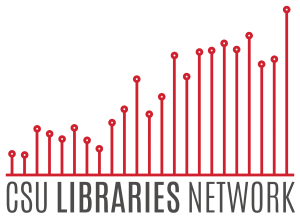Unified Library Management System: The tech to make services simpler
This article was written by CSU Libraries on October 6th, 2014.
In the California State University system, most libraries have three, four, sometimes five different systems for managing their collections, analyzing use, sharing resources with other libraries, and giving users the ability to search and find books, journal articles, and other research data.
“Most of these systems were built over the last ten years to help manage the growing number of electronic resources, and they’re all pretty good at what they do, but there are like four of them,” said CSU Director of Systemwide Digital Library Services David Walker.
And the systems used at one campus don’t necessarily communicate with the systems at other campuses. It is up to people to fill the gaps, transferring information between systems.
The whole process is repetitive and inefficient. “It’s a lot to keep up-to-date,” Walker said.
But CSU libraries are in the process of pursuing a whole new system, a next-generation platform that will bring all functions together into one place for the libraries. It’s called the Unified Library Management System, or ULMS, and Walker, along with library directors and staff from across the CSU, are preparing to send out a request for proposals so that the libraries can start unifying.
Working towards immediate access to the right materials
Currently, the different systems create a lot of duplication of work, Walker said.
The Chancellor’s Office purchases e-journals and e-books for all campuses as part of the Electronic Core Collection, for example, and negotiates for even more content on behalf of campuses on an opt-in basis. But each campus manages that collection information separately in their local systems so that users at their campus can find and access those resources.
“There’s a lot of duplication of work because we have all these systems that don’t really know about each other, or really talk to each other,” Walker said.
Having multiple systems also means it can take library staff more time to add and update information in each system. Errors are often introduced, like in a system-wide telephone game, said Brandon Dudley, interim library director at Sonoma State and a member of the ULMS steering committee.
“A package is made immediately available in the Chancellor’s Office management system, but then there’s a time lapse between when that information is turned on in the system and when it is downloaded and configured in each local system,” Dudley said.
The ULMS would give library users immediate access to those materials, as well as give libraries the capacity to manage their individual collections and coordinate loans.
Better assessment means better collections and more savings
In addition to helping users find resources more efficiently, the ULMS would give the Chancellor’s Office the opportunity to easily analyze how students and faculty use the collections.
Currently, each library does assessment to the best of their abilities, and in their own manner, Dudley said. None of that information is collected in one place, however.
“In negotiating how many users should be licensed to access a title, it’s difficult to gather usage data from each of the campuses and factor that into the decision, whereas with a centralized system, it would be cake,” Dudley said.
And that cake would lead to greater benefits for library users, because libraries need to assess which materials are in high demand, and negotiate contracts with publishers to get the best resources at the best price possible. The data from the ULMS could potentially be leveraged to purchase more resources in groups and at a discount, Walker said.
Making it happen
This summer, the CSU libraries were given $1 million from the Chancellor’s Office to invest in initiatives to keep library services moving forward.
The ULMS steering committee is preparing to hear proposals and “kick the tires” on several systems, Walker said.
Then, it’s a matter of creating a process and timeline for getting every campus on board and online.
Our story on the ULMS continues in “One platform, 23 campuses.”
Read more:

